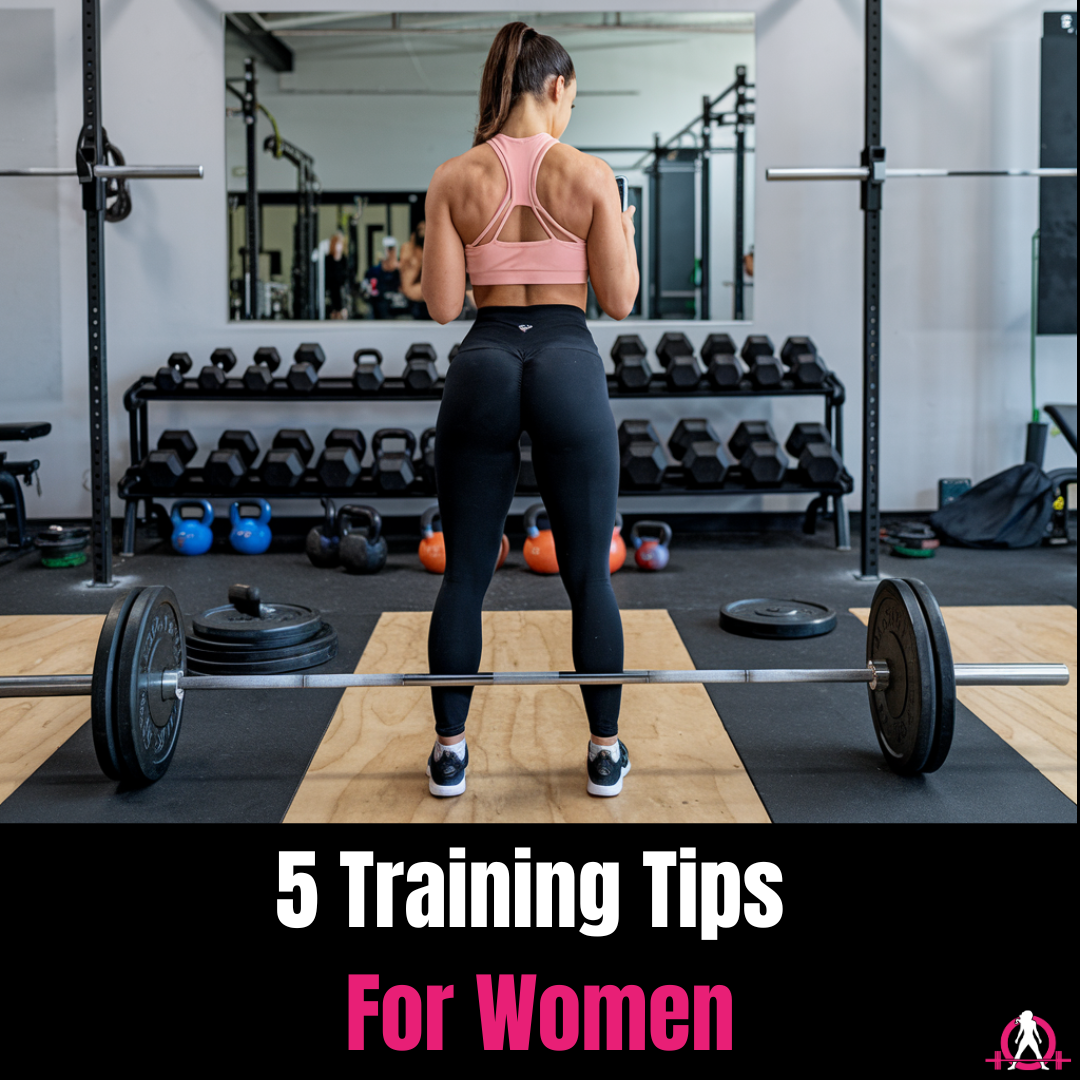
5 Training Tips for Women Who Lift Weights
Strength training is empowering, and for women, there are some unique considerations we need to take into account to maximize our results.
Whether you’re new to lifting or have been at it for years, these tips will help you lift smarter, train harder, and achieve your fitness goals.
Let’s dive into it!
1. Prioritize Your Glutes and Hamstrings
While all muscles are important, women naturally tend to have stronger quads compared to their hamstrings and glutes. Focusing on glute and hamstring development not only enhances strength but also helps with hip stability, posture, and lower back health.
How to Do It:
- Incorporate exercises like Romanian deadlifts, glute bridges, hip thrusts, and Bulgarian split squats into your routine.
- Consider a 2:1 ratio of posterior chain (hamstrings, glutes, lower back) to anterior chain (quads) exercises to balance your lower body strength.
Coach Rob’s Tip: Focus on slow, controlled reps and use pauses at the top of glute exercises to increase muscle activation.
2. Embrace the Power of Periodization
Women’s bodies experience hormonal fluctuations throughout the month, which can impact energy levels, strength, and recovery. Instead of fighting against these changes, work with them by using periodization—a structured training plan that adjusts intensity and volume based on your body’s natural cycle.
How to Do It:
- During the follicular phase (the first two weeks of your cycle), your strength and energy levels are typically higher. This is the best time to push for PRs and heavy lifts.
- During the luteal phase (the last two weeks), focus on lower-intensity, higher-rep workouts, mobility work, and recovery.
Coach Rob’s Tip: Track your cycle and adjust your training intensity to match your body’s natural rhythms. It can lead to better performance and reduced risk of injury.
3. Focus on Proper Core & Pelvic Floor Engagement
Core strength is crucial for all lifters, but women, especially those who’ve had children, need to pay extra attention to their pelvic floor muscles. A strong core and stable pelvic floor can improve your performance, prevent injuries, and support heavier lifts.
How to Do It:
- Practice diaphragmatic breathing and bracing techniques to protect your core during heavy lifts like squats and deadlifts.
- Include pelvic floor exercises like glute bridges with a focus on squeezing your pelvic muscles, or try bird dogsand planks.
Coach Rob’s Tip: When you brace, think about pulling your belly button in toward your spine and lifting your pelvic floor as if you’re trying to stop a stream of urine. This subtle engagement can make a big difference.
4. Don’t Be Afraid of Lifting Heavy
One of the biggest myths out there is that lifting heavy will make you “bulky.” The reality is, women simply don’t have the testosterone levels to build bulky muscle mass like men. Instead, lifting heavy weights helps you build lean muscle, burn fat, and increase strength.
How to Do It:
- Focus on compound movements like deadlifts, squats, bench press, and rows to engage multiple muscle groups and get the most bang for your buck.
- Don’t be afraid to add weight to the bar—challenge yourself to lift heavier, while maintaining good form, of course.
Coach Rob’s Tip: Start with a weight that allows you to do 5-8 reps with good form. When that starts to feel easy, it’s time to add more weight. You’re stronger than you think!
5. Prioritize Recovery & Nutrition
Recovery is where the magic happens. Many women don’t realize how much they need to rest and refuel to see the best results from their training. Proper nutrition and recovery can make the difference between progress and burnout.
How to Do It:
- Aim for at least 7-8 hours of quality sleep each night.
- Make sure you’re eating enough protein—aim for about 0.8-1 gram per pound of body weight daily to support muscle growth.
- Incorporate recovery techniques like foam rolling, stretching, and active rest days to keep your body feeling good.
Coach Rob’s Tip: Try adding a magnesium supplement to your routine to support muscle recovery, reduce soreness, and improve sleep quality. And don’t forget to hydrate—water is essential for muscle function and recovery!
Conclusion
Lifting weights is one of the best things you can do for your body and mind. By focusing on these five training tips, you’ll not only get stronger but also feel more confident in your training. Remember, progress takes time, so be patient and stay consistent.
Keep lifting heavy, stay strong, and never stop challenging yourself.
Yours in strength,
Coach Rob 🏋️♂️
Women Who Lift Weights
If you would like more info on our WWLW online coaching and how I can help you with your training and results fill this out.

0 comments